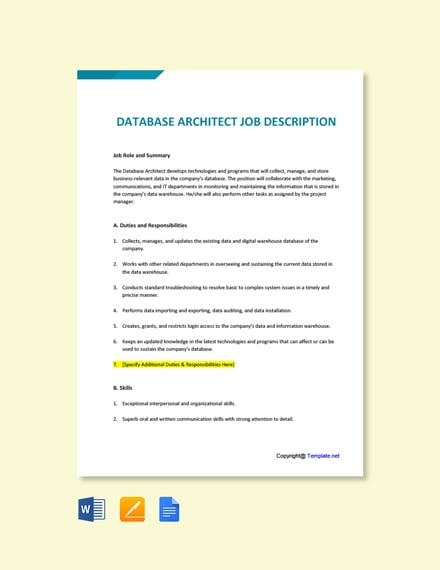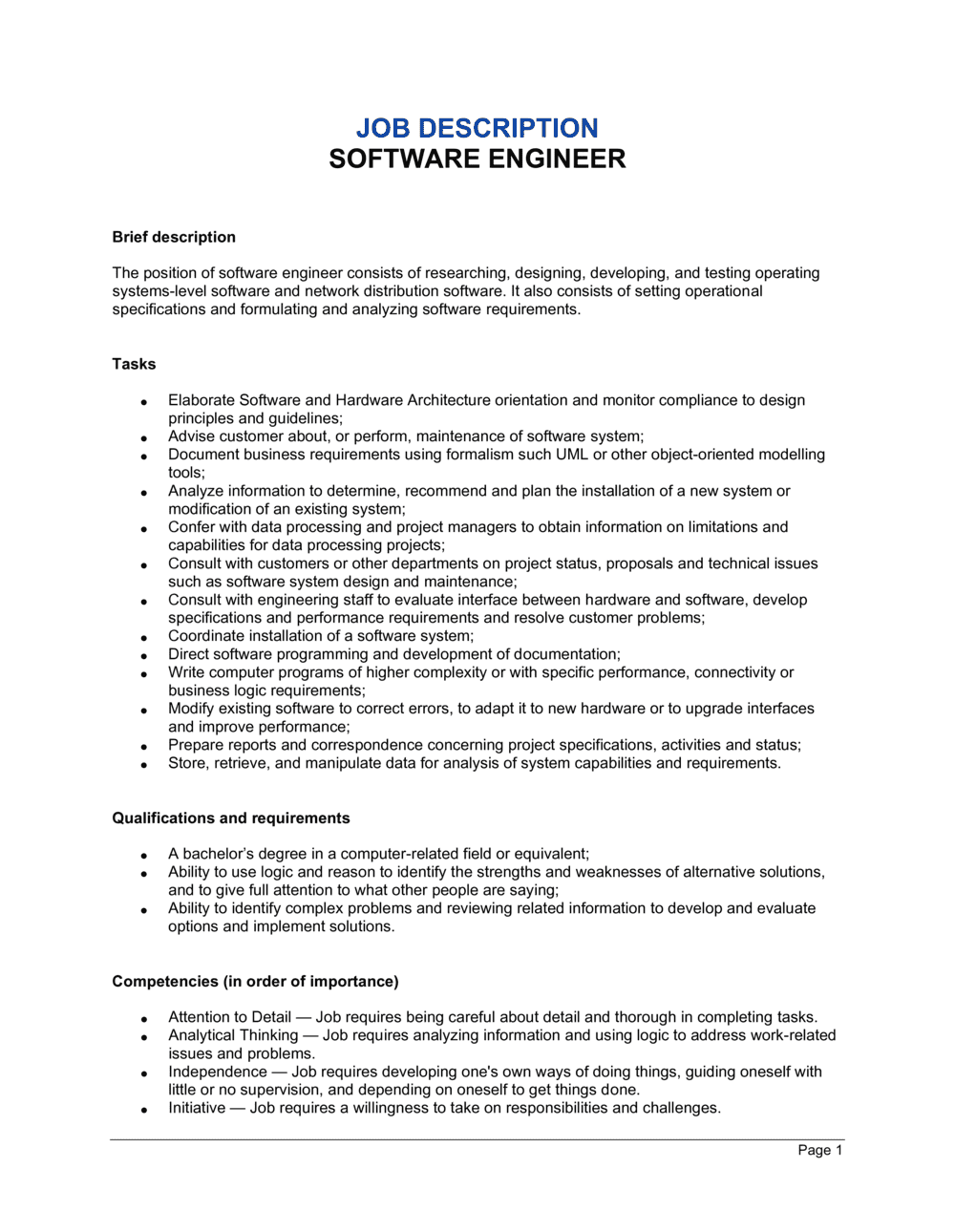

- #Software architect role description how to
- #Software architect role description update
- #Software architect role description software
Overall, the choice of approach to software architecture depends on the specific needs of the software project, including the size, complexity, scalability, and maintainability requirements. Common use cases including IoT, fraud detection, payment processing, website monitoring, and real-time marketing. It’s useful when real-time data processing is required. Event-driven architectureĪpplication is built around events that trigger specific actions. Developers can work on different services at the same time. This is good for larger software applications, as it’s more scalable. Microservices architectureĪpplication is divided into smaller, independent services that can be developed, deployed, and scaled independently. It’s good for smaller software applications. The popular Model-View-Controller (MVC) structure is an example of this. These layers could be a presentation layer (UI), application layer, business logic layer and a data access layer. We’ll mention three here just to give you an idea: Layered architectureĭata enters the top layer and works down until it reaches the bottom, which is usually a database. There are many different approaches to software architecture. So, you want to get into the technical nitty gritty.

This makes it easier for developers, project managers, and other stakeholders to collaborate effectively and work towards a common goal.
#Software architect role description update

Technologies: This is your tech stack and the decisions about which tools and technologies to use- programming languages, frameworks, libraries, and so on. A software architect makes decisions about what design pattern best fits the needs of the application.Īpplication layers: An application has different layers that cover the application UI, its business logic behind the scenes, data storage layers (interacting with the database and scaling), and more. These patterns help ensure that the software application is well-structured, maintainable, and scalable. Patterns: There are many different design patterns out there that solve specific software development problems. On the technical side, a software architect decides on: They design the structure of an application, but must also have the soft skills to negotiate between business stakeholders and developers.
#Software architect role description how to

The role of a software architect has become increasingly important as technology rapidly evolves.


 0 kommentar(er)
0 kommentar(er)
